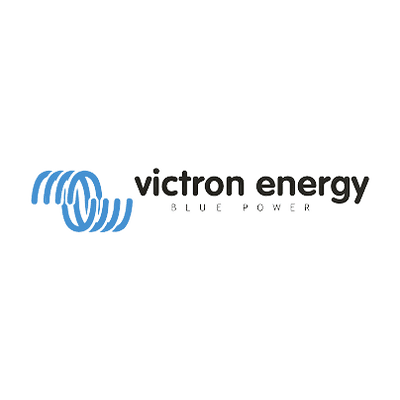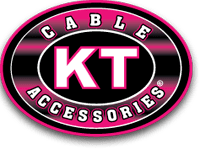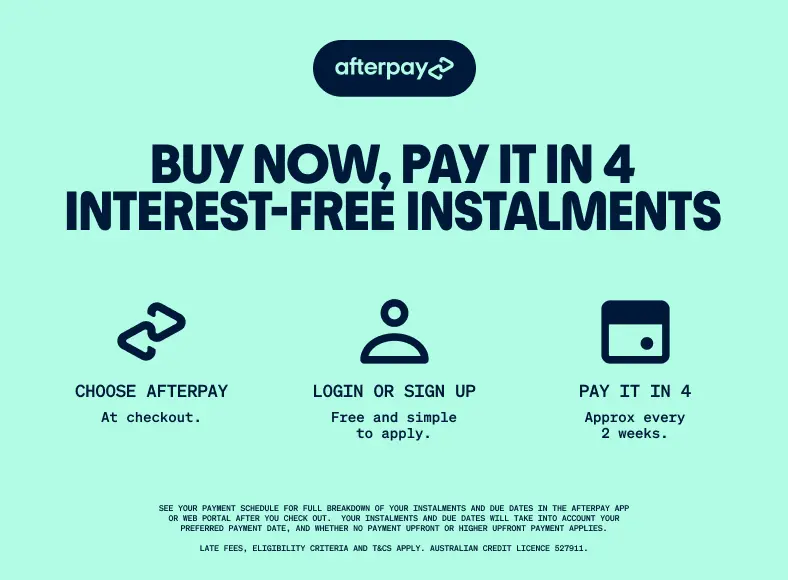Victron Smartsolar MPPT:
A solar charger gathers energy from your solar panels, and stores it in your batteries. Using the latest, fastest technology, SmartSolar maximises this energy-harvest, driving it intelligently to achieve full charge in the shortest possible time. SmartSolar maintains battery health, extending its life.
PWM and MPPT charge controllers are both widely used to charge batteries with solar power. The PWM controller is in essence a switch that connects a solar array to the battery. The result is that the voltage of the array will be pulled down to near that of the battery. The MPPT controller is more sophisticated (and more expensive): it will adjust its input voltage to harvest the maximum power from the solar array and then transform this power to supply the varying voltage requirement of the battery plus load. Thus, it essentially decouples the array and battery voltages so that there can be, for example, a 12 volt battery on one side of the MPPT charge controller and panels wired in series to produce 36 volts on the other.
It is generally accepted that MPPT will outperform PWM in a cold to temperate climate, while both controllers will show approximately the same performance in a subtropical to tropical climate. Besides performing the function of a basic controller, an MPPT controller also includes a DC to DC voltage converter, converting the voltage of the array to that required by the batteries, with very little loss of power.
An MPPT controller attempts to harvest power from the array near its Maximum Power Point, whilst supplying the varying voltage requirements of the battery plus load. Thus, it essentially decouples the array and battery voltages, so that there can be a 12 volt battery on one side of the MPPT charge controller and two 12 Vpanels wired in series to produce 36 volts on the other. If connected to a PV array with a substantially higher nominal voltage than the battery voltage, an MPPT controller will therefore provide charge current even at very high cell temperatures or in low irradiance conditions when a PWM controller would not help much.
As array size increases, both cabling cross sectional area and cable length will increase. The option to wire more panels in series and thereby decrease current, is a compelling reason to install an MPPT controller as soon as the array power exceeds a few hundred Watts (12 V battery), or several 100 Watts (24 V or 48 V battery)
Features:
MPPT: Ultra fast maximum power point tracking- The MPPT VE.Can SmartSolar charger connects to a PV array of 150 or 250 Volt Voc and will automatically detect and charge your 12, 24, or 48V battery bank with current ranging from 70 to 100A depending on the model. The charge settings are fully programmable and can even be set up for different battery chemistries, like lead-acid, lithium and others.
Control your charger remotely- The MPPT VE.Can SmartSolar charger can be remotely controlled and configured over Bluetooth via the VictronConnect App. This allows device set-up, management, and at-a-glance information, such as battery voltage and current, PV voltage and current, and historical data.
Daisy chain additional units- The VE.Can SmartSolar charger is equipped with CAN bus ports. This allows for communication with additional VE.Can SmartSolar chargers. The additional units are simply “daisy chained” to each other with a single RJ45 cable between the individual units. When connected to each other, all individual VE.Can SmartSolar chargers, will synchronise their charge stages. They can also send their data, via a single cable, to a GX monitoring device.
Remote monitoring & control- If the GX device is connected to the internet, the Victron Remote Management Portal (VRM) provides access to the full power of your solar charger(s).
SmartSolar control display (optional extra)- The VE.Can SmartSolar charger is also equipped with a VE.Direct port like our other MPPT solar chargers. This port can be for single unit monitoring or for streetlight control. The remote on/off connector can be externally controlled by a third-party device like a lithium battery. An optional plug-in LCD display/control provides live-data, set-up and management, straight from the face of the device.
Ultra-fast maximum power point tracking (MPPT)- Especially in case of a clouded sky, when light intensity is changing continuously, an ultra-fast MPPT controller will improve energy harvest by up to 30% compared to PWM charge controllers and by up to 10% compared to slower MPPT controllers.
Advanced maximum power point detection in case of partial shading conditions- If partial shading occurs, two or more maximum power points (MPP) may be present on the powervoltage curve. Conventional MPPTs tend to lock to a local MPP, which may not be the optimum MPP. The innovative SmartSolar algorithm will always maximize energy harvest by locking to the optimum MPP.
Outstanding conversion efficiency- No cooling fan. Maximum efficiency exceeds 98%.
Flexible charge algorithm- Fully programmable charge algorithm, and eight pre-programmed algorithms, selectable with a rotary switch (see manual for details).
Extensive electronic protection- Over-temperature protection and power derating when temperature is high. PV short circuit and PV reverse polarity protection. PV reverse current protection.
Bluetooth Smart built-in- The wireless solution to set-up, monitor, update and synchronise SmartSolar Charge Controllers.
Internal temperature sensor and optional external battery voltage and temperature sensing via Bluetooth- A Smart Battery Sense or a BMV-712 Smart Battery Monitor can be used to communicate battery voltage and temperature to one or more SmartSolar Charge Controllers.
VE.Can: the multiple controller solution- Up to 25 units can be synchronised with VE.Can
VE.Direct or VE.Can - For a wired data connection to a Color Control GX, other GX products, PC or other devices
Remote on-off & programmable relay - To connect for example to a VE.BUS BMS. Can be programmed to trip on an alarm, or other events
SmartSolar Charge Controller |
|
| 150/70 | 150/85 | 150/100 | |
Battery Voltage | 12 / 24V | |||||
Rated charge current |
|
| 70A | 85A | 100A | |
Nominal PV power, 12V 1a,b) |
|
| 1000W | 1200W | 1450W | |
Nominal PV power, 24V 1a,b) |
|
| 2000W | 2400W | 2900W | |
Max. PV short circuit current 2) | 50A (max 30A per MC4 conn.) | 70A (max 30A per MC4 conn.) | ||||
Maximum PV open circuit voltage | 150V absolute maximum coldest conditions 145V start-up and operating maximum | |||||
Maximum efficiency | 98% | |||||
Self-consumption | Less than 35mA @ 12V | |||||
Charge voltage 'absorption.' | Default setting: 14,4 / 28,8 (adjustable with: rotary switch, display, VE.Direct or Bluetooth) | |||||
Charge voltage 'float' | Default setting: 13,8 / 27,6 (adjustable: rotary switch, display, VE.Direct or Bluetooth) | |||||
Charge voltage 'equalization' | Default setting: 16,2V / 32,4V (adjustable) | |||||
Charge algorithm | multi-stage adaptive (eight preprogrammed algorithms) or user defined algorithm | |||||
Temperature compensation | -16 mV / -32 mV / -64 mV / °C | |||||
Protection | PV reverse polarity / Output short circuit / Over temperature | |||||
Operating temperature | -30 to +60°C (full rated output up to 40°C) | |||||
Humidity | 95%, non-condensing | |||||
Maximum altitude | 5000m (full rated output up to 2000m) | |||||
Environmental condition | Indoor, unconditioned | |||||
Pollution degree | PD3 | |||||
Data communication port | VE.CAN, VE.Direct or Bluetooth | |||||
Remote on/off | Yes (2 pole connector) | |||||
Programmable relay | DPST AC rating: 240VAC / 4A DC rating: 4A up to 35VDC, 1A up to 60VDC | |||||
Parallel operation | Yes, parallel synchronized operation with VE.CAN or Bluetooth | |||||
ENCLOSURE | ||||||
Colour | Blue (RAL 5012) | |||||
PV terminals 3) | 35 mm² / AWG2 (Tr models) Two pairs of MC4 connectors (MC4 models) | 35 mm² / AWG2 (Tr models) Three pairs of MC4 connectors (MC4 models) | ||||
Battery terminals | 35mm² / AWG2 | |||||
Protection category | IP43 (electronic components), IP22 (connection area) | |||||
Weight | 3 kg | 4,5kg | ||||
Dimensions (h x w x d) in mm | Tr models: 185 x 250 x 95 mm MC4 models: 215 x 250 x 95 mm | Tr models: 216 x 295 x 103 MC4 models: 246 x 295 x 103 | ||||
STANDARDS | ||||||
Safety | EN/IEC 62109-1, UL 1741, CSA C22.2 | |||||
1a) If more PV power is connected, the controller will limit input power. | ||||||
1b) The PV voltage must exceed Vbat + 5V for the controller to start. Thereafter the minimum PV voltage is Vbat + 1V. | ||||||
2) A PV array with a higher short circuit current may damage the controller. | ||||||
3) MC4 models: several splitter pairs may be needed to parallel the strings of solar panels | ||||||
| SKU | SCC115110411 |
|---|---|
| Barcode # | 8719076050353 |
| Brand | Victron |
| Shipping Weight | 4.6000kg |
Victron Smartsolar MPPT:
A solar charger gathers energy from your solar panels, and stores it in your batteries. Using the latest, fastest technology, SmartSolar maximises this energy-harvest, driving it intelligently to achieve full charge in the shortest possible time. SmartSolar maintains battery health, extending its life.
PWM and MPPT charge controllers are both widely used to charge batteries with solar power. The PWM controller is in essence a switch that connects a solar array to the battery. The result is that the voltage of the array will be pulled down to near that of the battery. The MPPT controller is more sophisticated (and more expensive): it will adjust its input voltage to harvest the maximum power from the solar array and then transform this power to supply the varying voltage requirement of the battery plus load. Thus, it essentially decouples the array and battery voltages so that there can be, for example, a 12 volt battery on one side of the MPPT charge controller and panels wired in series to produce 36 volts on the other.
It is generally accepted that MPPT will outperform PWM in a cold to temperate climate, while both controllers will show approximately the same performance in a subtropical to tropical climate. Besides performing the function of a basic controller, an MPPT controller also includes a DC to DC voltage converter, converting the voltage of the array to that required by the batteries, with very little loss of power.
An MPPT controller attempts to harvest power from the array near its Maximum Power Point, whilst supplying the varying voltage requirements of the battery plus load. Thus, it essentially decouples the array and battery voltages, so that there can be a 12 volt battery on one side of the MPPT charge controller and two 12 Vpanels wired in series to produce 36 volts on the other. If connected to a PV array with a substantially higher nominal voltage than the battery voltage, an MPPT controller will therefore provide charge current even at very high cell temperatures or in low irradiance conditions when a PWM controller would not help much.
As array size increases, both cabling cross sectional area and cable length will increase. The option to wire more panels in series and thereby decrease current, is a compelling reason to install an MPPT controller as soon as the array power exceeds a few hundred Watts (12 V battery), or several 100 Watts (24 V or 48 V battery)
Features:
MPPT: Ultra fast maximum power point tracking- The MPPT VE.Can SmartSolar charger connects to a PV array of 150 or 250 Volt Voc and will automatically detect and charge your 12, 24, or 48V battery bank with current ranging from 70 to 100A depending on the model. The charge settings are fully programmable and can even be set up for different battery chemistries, like lead-acid, lithium and others.
Control your charger remotely- The MPPT VE.Can SmartSolar charger can be remotely controlled and configured over Bluetooth via the VictronConnect App. This allows device set-up, management, and at-a-glance information, such as battery voltage and current, PV voltage and current, and historical data.
Daisy chain additional units- The VE.Can SmartSolar charger is equipped with CAN bus ports. This allows for communication with additional VE.Can SmartSolar chargers. The additional units are simply “daisy chained” to each other with a single RJ45 cable between the individual units. When connected to each other, all individual VE.Can SmartSolar chargers, will synchronise their charge stages. They can also send their data, via a single cable, to a GX monitoring device.
Remote monitoring & control- If the GX device is connected to the internet, the Victron Remote Management Portal (VRM) provides access to the full power of your solar charger(s).
SmartSolar control display (optional extra)- The VE.Can SmartSolar charger is also equipped with a VE.Direct port like our other MPPT solar chargers. This port can be for single unit monitoring or for streetlight control. The remote on/off connector can be externally controlled by a third-party device like a lithium battery. An optional plug-in LCD display/control provides live-data, set-up and management, straight from the face of the device.
Ultra-fast maximum power point tracking (MPPT)- Especially in case of a clouded sky, when light intensity is changing continuously, an ultra-fast MPPT controller will improve energy harvest by up to 30% compared to PWM charge controllers and by up to 10% compared to slower MPPT controllers.
Advanced maximum power point detection in case of partial shading conditions- If partial shading occurs, two or more maximum power points (MPP) may be present on the powervoltage curve. Conventional MPPTs tend to lock to a local MPP, which may not be the optimum MPP. The innovative SmartSolar algorithm will always maximize energy harvest by locking to the optimum MPP.
Outstanding conversion efficiency- No cooling fan. Maximum efficiency exceeds 98%.
Flexible charge algorithm- Fully programmable charge algorithm, and eight pre-programmed algorithms, selectable with a rotary switch (see manual for details).
Extensive electronic protection- Over-temperature protection and power derating when temperature is high. PV short circuit and PV reverse polarity protection. PV reverse current protection.
Bluetooth Smart built-in- The wireless solution to set-up, monitor, update and synchronise SmartSolar Charge Controllers.
Internal temperature sensor and optional external battery voltage and temperature sensing via Bluetooth- A Smart Battery Sense or a BMV-712 Smart Battery Monitor can be used to communicate battery voltage and temperature to one or more SmartSolar Charge Controllers.
VE.Can: the multiple controller solution- Up to 25 units can be synchronised with VE.Can
VE.Direct or VE.Can - For a wired data connection to a Color Control GX, other GX products, PC or other devices
Remote on-off & programmable relay - To connect for example to a VE.BUS BMS. Can be programmed to trip on an alarm, or other events
SmartSolar Charge Controller |
|
| 150/70 | 150/85 | 150/100 | |
Battery Voltage | 12 / 24V | |||||
Rated charge current |
|
| 70A | 85A | 100A | |
Nominal PV power, 12V 1a,b) |
|
| 1000W | 1200W | 1450W | |
Nominal PV power, 24V 1a,b) |
|
| 2000W | 2400W | 2900W | |
Max. PV short circuit current 2) | 50A (max 30A per MC4 conn.) | 70A (max 30A per MC4 conn.) | ||||
Maximum PV open circuit voltage | 150V absolute maximum coldest conditions 145V start-up and operating maximum | |||||
Maximum efficiency | 98% | |||||
Self-consumption | Less than 35mA @ 12V | |||||
Charge voltage 'absorption.' | Default setting: 14,4 / 28,8 (adjustable with: rotary switch, display, VE.Direct or Bluetooth) | |||||
Charge voltage 'float' | Default setting: 13,8 / 27,6 (adjustable: rotary switch, display, VE.Direct or Bluetooth) | |||||
Charge voltage 'equalization' | Default setting: 16,2V / 32,4V (adjustable) | |||||
Charge algorithm | multi-stage adaptive (eight preprogrammed algorithms) or user defined algorithm | |||||
Temperature compensation | -16 mV / -32 mV / -64 mV / °C | |||||
Protection | PV reverse polarity / Output short circuit / Over temperature | |||||
Operating temperature | -30 to +60°C (full rated output up to 40°C) | |||||
Humidity | 95%, non-condensing | |||||
Maximum altitude | 5000m (full rated output up to 2000m) | |||||
Environmental condition | Indoor, unconditioned | |||||
Pollution degree | PD3 | |||||
Data communication port | VE.CAN, VE.Direct or Bluetooth | |||||
Remote on/off | Yes (2 pole connector) | |||||
Programmable relay | DPST AC rating: 240VAC / 4A DC rating: 4A up to 35VDC, 1A up to 60VDC | |||||
Parallel operation | Yes, parallel synchronized operation with VE.CAN or Bluetooth | |||||
ENCLOSURE | ||||||
Colour | Blue (RAL 5012) | |||||
PV terminals 3) | 35 mm² / AWG2 (Tr models) Two pairs of MC4 connectors (MC4 models) | 35 mm² / AWG2 (Tr models) Three pairs of MC4 connectors (MC4 models) | ||||
Battery terminals | 35mm² / AWG2 | |||||
Protection category | IP43 (electronic components), IP22 (connection area) | |||||
Weight | 3 kg | 4,5kg | ||||
Dimensions (h x w x d) in mm | Tr models: 185 x 250 x 95 mm MC4 models: 215 x 250 x 95 mm | Tr models: 216 x 295 x 103 MC4 models: 246 x 295 x 103 | ||||
STANDARDS | ||||||
Safety | EN/IEC 62109-1, UL 1741, CSA C22.2 | |||||
1a) If more PV power is connected, the controller will limit input power. | ||||||
1b) The PV voltage must exceed Vbat + 5V for the controller to start. Thereafter the minimum PV voltage is Vbat + 1V. | ||||||
2) A PV array with a higher short circuit current may damage the controller. | ||||||
3) MC4 models: several splitter pairs may be needed to parallel the strings of solar panels | ||||||
| SKU | SCC115110411 |
|---|---|
| Barcode # | 8719076050353 |
| Brand | Victron |
| Shipping Weight | 4.6000kg |













 More info
More info
































